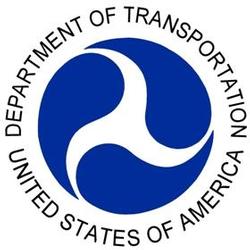
BTS releases July 2014 North American freight numbers
U.S.-NAFTA freight totaled $101.1 billion in July 2014 as all five major transportation modes – air, vessel, pipeline, rail, and trucks – carried more U.S.-NAFTA freight than in July 2013, according to the TransBorder Freight Data released today by the U.S. Department of Transportation’s Bureau of Transportation Statistics (BTS). This is the fifth consecutive month with U.S.-NAFTA freight flows exceeding $100 billion.
Freight by Mode
In July, the value of commodities moving by pipeline grew by the largest percentage of any mode, 10.8 percent. Rail freight increased 10.0 percent followed by a truck increase of 8.5 percent, vessel increase of 5.6 percent, and an air increase of 1.2 percent. Of the $7.9 billion increase in the value of U.S.-NAFTA freight from July 2013, truck freight contributed the most, $4.7 billion, followed by rail, $1.4 billion. The trucking increase was due to growth in truck freight with both Mexico, up $2.5 billion, and Canada, up $2.2 billion.
Trucks carry three-fifths of U.S.-NAFTA freight and are the most heavily utilized mode for moving goods to and from both U.S.-NAFTA partners. Trucks carried 59.2 percent of U.S.-NAFTA freight in July 2014, accounting for $30.5 billion of exports and $29.3 billion of imports.
Rail remained the second largest mode, moving 14.8 percent of all U.S.-NAFTA freight, followed by vessel at 9.1 percent, pipeline at 8.5 percent, and air at 3.4 percent. The surface transportation modes of truck, rail and pipeline carried 82.4 percent of the total U.S.-NAFTA freight flows.
Trade with Canada
Year-to-year, the percent change in the value of U.S.-Canada freight moved by vessel increased the most of any mode, growing 30.9 percent, followed by a pipeline increase of 10.7 percent. The vessel increase was due to a doubling of export value to Canada while imports by vessel fell 2.6 percent. U.S.-Canada pipeline freight comprised 95.2 percent of total U.S.-NAFTA pipeline freight in July. Freight moved by rail increased by 8.5 percent, truck by 8.0 percent, and air by 2.0 percent.
Trucks carried 52.7 percent of the $55.2 billion of freight to and from Canada, followed by rail at 15.2 percent, pipeline at 14.8 percent, vessel at 6.3 percent and air at 4.0 percent. The surface transportation modes of truck, rail and pipeline carried 82.8 percent of the total U.S.-Canada freight flows.
Trade with Mexico
Year-to-year, the value of rail freight rose 12.0 percent, the largest percentage increase of any U.S.-Mexico mode. Freight moved by pipeline increased 11.4 percent and truck by 8.8 percent, while air and vessel decreased by 0.1 and 5.3 percent respectively. The decrease in vessel freight was principally due to a decline in mineral fuels imports..
Trucks carried 66.9 percent of the $45.9 billion of freight to and from Mexico, followed by rail at 14.2 percent, vessel at 12.6 percent, air at 2.7 percent and pipeline at 0.9 percent. The surface transportation modes of truck, rail and pipeline carried 82.1 percent of the total U.S.-Mexico freight flows.
See BTS Transborder Data Release for summary tables and additional data. See North American Transborder Freight Data on the BTS website for additional data for surface modes since 1995 and all modes since 2004.









